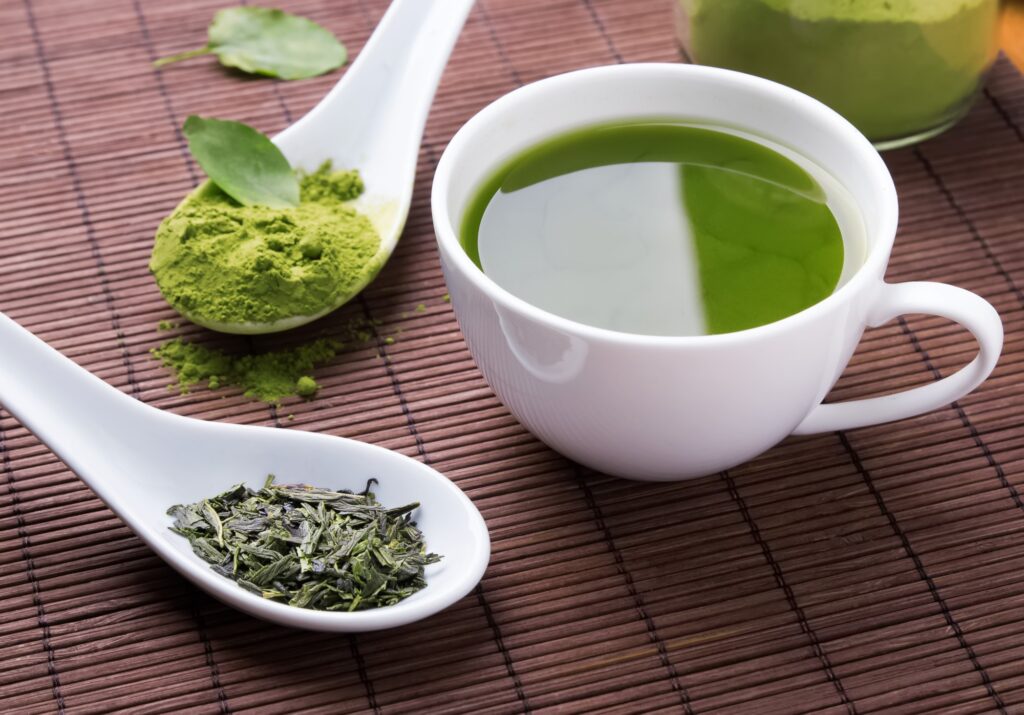
Green tea leaves have been a cherished beverage and a symbol of wellness for centuries, captivating the hearts and minds of tea enthusiasts worldwide. Originating from the Camellia sinensis plant, these delicate leaves are renowned for their rich flavor, vibrant color, and remarkable health benefits. In this comprehensive guide, we will delve into the intriguing world of green tea leaves, exploring their origins, the science behind their health advantages, and the art of brewing the perfect cup.
The Health Benefits of Green Tea Leaves
Green tea leaves are a treasure trove of antioxidants, vitamins, and minerals that work in harmony to promote overall well-being. These leaves are particularly rich in polyphenols, a class of compounds that have been extensively studied for their ability to combat free radicals and support a healthy immune system. Additionally, green tea leaves contain L-theanine, an amino acid that can help reduce stress and improve cognitive function.
Research has shown that regular consumption of green tea leaves can:
- Enhance cardiovascular health by lowering the risk of heart disease and stroke.
- Support healthy weight management by boosting metabolism and fat burning.
- Improve brain function and cognitive performance.
- Reduce the risk of certain types of cancer, including breast, prostate, and colorectal cancer.
- Promote healthy skin and delay the signs of aging.
The Green Tea Plant
The Camellia sinensis plant, from which green tea leaves are harvested, is a evergreen shrub native to Asia. This versatile plant can thrive in various climates, with the most renowned growing regions located in China, Japan, and India. The leaves of the Camellia sinensis plant are carefully cultivated, withered, and processed to preserve their delicate flavor and nutritional profile, giving rise to the diverse array of green tea varieties we enjoy today.
Different Types of Green Tea Leaves
Green tea leaves come in a wide range of varieties, each with its unique flavor profile, aroma, and processing method. Some of the most well-known types of green tea leaves include:
- Sencha: A popular Japanese green tea with a fresh, grassy flavor and a vibrant green hue.
- Matcha: A fine, powdered green tea from Japan that is traditionally used in the Japanese tea ceremony.
- Gunpowder: A Chinese green tea with tightly rolled leaves that unfurl when brewed, offering a robust and slightly smoky taste.
- Dragonwell (Longjing): A renowned Chinese green tea with a delicate, nutty flavor and a distinctive flat-shaped leaf.
- Gyokuro: A premium Japanese green tea with a sweet, umami-rich flavor due to its unique growing and processing methods.
How to Choose High-Quality Organic Green Tea Leaves
When selecting green tea leaves, it’s crucial to look for high-quality, organic options to ensure you’re getting the maximum health benefits. Here are some tips to help you identify the best green tea leaves:
- Origin: Choose green tea leaves from renowned growing regions, such as China, Japan, or India, where the soil and climate conditions are ideal for producing exceptional quality.
- Appearance: Look for vibrant, uniform leaves with a rich green color and a fresh, grassy aroma.
- Certification: Opt for green tea leaves that are certified organic, as this ensures they were grown without the use of synthetic pesticides or fertilizers.
- Freshness: Check the harvest date or “best by” date on the packaging to ensure you’re getting the freshest possible green tea leaves.
- Reputable Brands: Seek out green tea leaves from trusted, reputable brands that have a proven track record of quality and sustainability.
Brewing Techniques for Green Tea Leaves
Brewing the perfect cup of green tea requires a delicate balance of temperature, time, and technique. Here are some key steps to follow for the best results:
- Water Temperature: Green tea leaves are delicate and can become bitter if brewed with water that is too hot. The ideal water temperature is between 160°F and 180°F (70°C to 82°C).
- Brewing Time: The recommended steeping time for green tea leaves is typically 2 to 3 minutes. Oversteeping can result in a bitter, astringent flavor.
- Vessel: Use a glass, ceramic, or porcelain teapot or cup to brew your green tea. Avoid metal vessels, as they can impart an undesirable metallic taste.
- Leaf-to-Water Ratio: Use approximately 1 to 2 teaspoons of green tea leaves per 8 ounces (240 ml) of water.
- Water Quality: Use fresh, filtered water for the best-tasting green tea. Avoid using water that has been boiled multiple times, as it can lack the necessary oxygen for optimal flavor extraction.
By following these brewing guidelines, you can unlock the full potential of your green tea leaves and enjoy a delightful, flavorful cup every time.
Popular Green Tea Leaves Recipes
Green tea leaves can be incorporated into a variety of delicious and healthy recipes, from soothing beverages to savory dishes. Here are a few popular ways to enjoy the versatility of green tea leaves:
- Matcha Latte: Whisk high-quality matcha powder with hot water or milk for a creamy, frothy green tea latte.
- Green Tea Ice Cream: Infuse green tea leaves into a custard base to create a refreshing, antioxidant-rich ice cream.
- Green Tea Smoothie: Blend green tea leaves, fruits, and your choice of milk or yogurt for a nutrient-packed smoothie.
- Green Tea Muffins: Incorporate finely ground green tea leaves into muffin batter for a delightful, subtly-flavored treat.
- Green Tea Salmon: Marinate salmon fillets in a mixture of green tea leaves, soy sauce, and honey for a flavorful, healthy main dish.
Exploring the Cultural Significance of Green Tea Leaves
Green tea leaves have long been woven into the cultural fabric of many Asian countries, particularly China and Japan. In these regions, the art of tea preparation and consumption has evolved into intricate rituals and traditions that celebrate the harmony between nature, the human experience, and the pursuit of mindfulness.
The Japanese tea ceremony, known as “Chanoyu,” is a prime example of the reverence and respect accorded to green tea leaves. This centuries-old practice involves the meticulous preparation and presentation of matcha, a finely ground green tea powder, in a serene and thoughtful manner. Similarly, in China, the appreciation for green tea leaves has given rise to the concept of “Cha Dao,” or the “Way of Tea,” which emphasizes the spiritual and meditative aspects of tea drinking.
The History of Green Tea Leaves
The origins of green tea leaves can be traced back thousands of years to ancient China, where the Camellia sinensis plant was first cultivated and used as a medicinal beverage. Over the centuries, the cultivation and processing of green tea leaves evolved, with each region developing its own unique techniques and varietal characteristics.
The spread of green tea leaves to Japan, Korea, and other parts of Asia further enriched the cultural significance and culinary applications of this versatile plant. Today, green tea leaves continue to captivate tea enthusiasts worldwide, as the global demand for this healthful and flavorful beverage continues to grow.
Embracing the Goodness of Green Tea Leaves
Green tea leaves are a true gift from nature, offering a harmonious blend of flavor, aroma, and profound health benefits. By understanding the intricacies of this remarkable plant, from its cultivation to its cultural significance, we can fully appreciate the joy and wellness that green tea leaves can bring to our lives.






